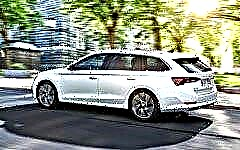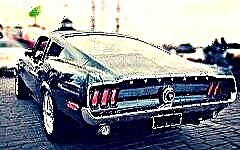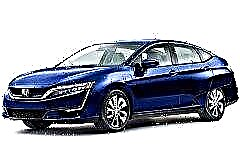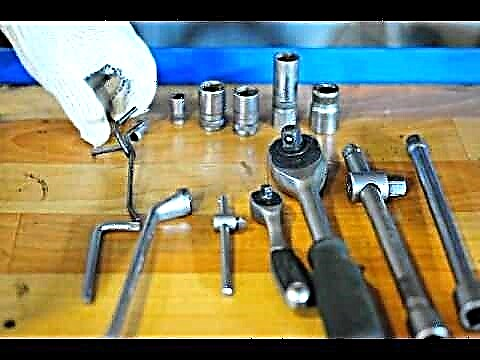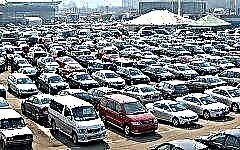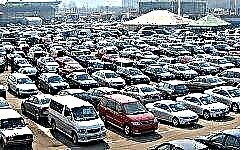
In the context of the Covid-19 pandemic, the world is experiencing an unprecedented crisis affecting all areas of business and affecting all sectors of society. Carmakers and dealer networks have mobilized to maximize customer satisfaction, but in Russia, vehicle sales in the first half of 2020 fell well below expectations, even though supported by government aid measures, down 23.3% instead of the projected 2.5%.
According to the AEB Automobile Manufacturers' Committee responsible for collecting sales data, Russians purchased almost 200,000 fewer cars and light commercial vehicles in the first half of the year than in the corresponding period last year.
The 6 months were a slow-climb roller coaster ride for manufacturers and dealers at the start of the year, followed by a sharp and never-before-seen decline in April-May, culminating in relative stabilization in June and signs of a slow return to the previous year's performance in July. showing an overall progress of 6.8%
- summed up Thomas Stärtzel, chairman of the committee.
The situation in the Russian automotive market
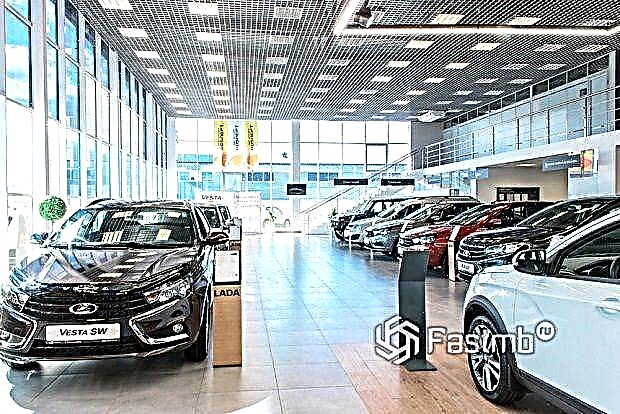
According to analysts, the current situation in the Russian car market reflects serious economic problems that have arisen in literally all other countries of the world - both developing and well-developed ones. Nearly all brands and sellers suffered significant losses. Local cars became the bestsellers during the crisis. Let's take a closer look at the list of models that Russians bought more willingly than others this year.
The top ten best-selling brands in mid-2020 included:
- Lada;
- Kia;
- Hyundai;
- Renault;
- Volkswagen;
- Toyota;
- Skoda;
- Nissan;
- GAZ LCV;
- UAZ.
Rating agencies emphasize that the domestic brand Lada supports the Russian economy more reliably than others. It still holds the leading position despite a drop in market share to 21.5% in 2020 from 24.1% in 2019. Kia ranks 2nd with a share of 11.1%, although it is also in crisis. Renault moved up one position and took the fourth step of the "podium", giving way to the more agile Hyundai. At the same time, Volkswagen and Toyota were ahead of Skoda, moving up to 5th and 6th places, respectively.
Nissan (-58.9%), GAZ (-58.1%) and UAZ (-69.7%) round out the top 10. They, too, are going through hard times, but they were more fortunate than even the lucky Changan, who for the first time entered the top 25 best-selling brands in Russia and the only one who showed positive, moreover, in double digits - its April growth was as much as 52.7%.
Haval, whose largest sales decline in half a year was -29.5%, Isuzu (-30.5%), Chery (-33.7%), Geely (-35%), Iveco (-35.9%), FAW (-43.6%), Suzuki (-52.4%) and Audi (-53.8%) also suffered losses, but still managed to enter the top twenty in the first half of the year.
What cars are best selling in Russia, despite the crisis

Reports on the exact number of vehicles sold from various global and domestic research institutes and research platforms - providers of market and consumer data - vary, but their opinions differ on major points.
For example, in the fact that Granta and Vesta in the 1st half of 2020 took the first two places in the Russian car market with more than 28 thousand units sold for each model. KIA Rio, Hyundai Creta and VW Polo were also among the most preferred models.
The most significant drop was noted in Hyundai Creta, sales of which decreased by more than two thousand units compared to the same period last year.
So, here is the list of winners for the passenger car industry (based on the latest data from the Association for European Businesses, AEB). The positional arrangement is conditionally familiar, but in general the top list of the best-selling car brands and their models in the first half of 2020 is as follows:
- LADA: Granta, Largus, XRAY and Vesta;
- AvtoVAZ: Niva (former Chevrolet Niva, since July 2020 under the LADA brand);
- KIA: Rio, Sportage and Optima;
- Volkswagen: Polo and Tiguan;
- Toyota: RAV4 and Camry;
- Mazda: CX-5;
- Hyundai: Creta and Solaris;
- Renault: Logan, Arkana, Sandero, Kaptur and Duster;
- Skoda: Karoq, Kodiaq, Rapid and Octavia;
- Nissan: Qashqai and X-Trail.
Vesta almost caught up with Grant, showing slightly lower half-year sales. KIA Rio remains in third place, while Volkswagen Polo climbed one position in March and finished in 4th place, bypassing Cretu, and Tiguan gave way to Toyota RAV4 by June, but broke his previous record in the same period of 2019. It entered the list of the best SUVs in Russia, breaking the months-long reign of the Hyundai Creta - a kind of bestseller in the Russian crossover segment since its launch. In its sector, Creta actually occupies one of the leading positions along with Lada 4x4 and the universal Largus, which have also shown a surge in popularity recently. The most sought after SUVs also include the BMW X7, Renault Duster and Nissan Qashqai.
2020, with its unusually low sales, brought other surprises to the crossover sector. Skoda Kodiaq climbed to a record high since January last year, Kia Sportage moved up from 12th to 8th, Skoda Karoq brilliantly entered the top 25 at 14th, Toyota Prado moved to 23rd, and the new Kia Seltos dropped to 24th.
News is also taking place outside the familiar group of models: Renault Arkana, for example, for the first time sat on the 27th place in the Russian SUV ranking, and the Haval F7 (40th place) became the best-selling Chinese nameplate, beating Geely Atlas (43rd place) and Haval H6 (57th), down 10 positions since 2019. Chery Tiggo, Changan CS35 / CS55 and Geely Coolray also got into the first hundred.
The most popular models for the summer of 2020
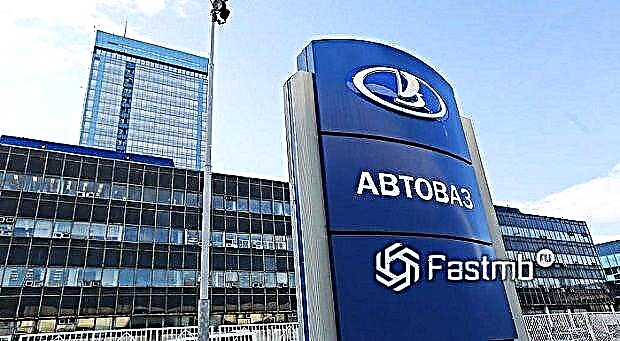
In the first summer month, the best position in the top again belonged to the domestic auto giant Lada, which testified to the tendency of “returning to the roots” among Russian buyers.
Number 2 - Kia (although its share decreased by 12.1%), number 4 Renault (-10.4%) and number 6 Toyota (-13.9%) also outperformed rivals Volkswagen (-20%) and Hyundai (- 18.1%) in June.
Skoda (+ 3.2%) showed an increase over the previous year and entered the top ten. UAZ (-11.8%), Nissan (-21.7%) and GAZ (-21.6%) are fighting for a potential buyer with varying success, while Lexus and Mazda lost ground in the spring, but gained momentum again in the summer of 2020 (+ 22.5% and + 9.2%, respectively).
Again, the products of Chinese automakers have become more in demand: Changan (+ 377.7% compared to March), FAW (+ 181%), Haval (+ 99.2%), Chery (+ 28.2%) and Geely (+ 10.4%). Euphoria in these difficult times is also felt by Honda (+ 60%), Fiat (+ 21.5%) and Suzuki (+ 10%) - against the background of spring degradation, their summer report cards are also impressive.
In early summer, despite the ongoing economic crisis, the devaluation of the ruble and the sharp rise in the popularity of used cars, the market for new cars began to revive. The drop in sales improved positively, barely surviving the shocking April collapse to -72.4% due to total coronavirus isolation and returning to a more palatable -6.8% in June. The top six bestsellers have returned to their positions, and the top five have surpassed all expectations.
Lada Granta took 1st place - its performance compared, for example, with June 2015, decreased only by 10%. Lada Vesta (-5.6% from last year's results) and Kia Rio (-4.9%) placed below it, surpassing Hyundai Creta, which showed an increase of 7.8%, establishing itself as one of the best-selling crossovers in Russia.
The sales charts for Toyota RAV4 (+ 0.6%) and Renault Sandero (+ 0.1%) also showed insignificant growth - the same as the famous Niva (+ 41.6%) and Mazda CX-5 (+ 13.3% ). In addition, the last three months enjoyed unprecedented success Toyota RAV4, Mitsubishi Outlander (in February reached almost the highest rating in almost 5 recent years), Skoda Karoq, Renault Arkana and Skoda Rapid II - a new model that surpassed the Rapid of the previous generation in popularity.
It should be noted that car dealerships currently operating in Russia do not provide accurate monthly reports (for the most part, this is due to quarantine and delayed purchases), but everyone unanimously notes a very restrained pace of sales.Mercedes and BMW dealers now also report only quarterly. According to their June information, sales have dropped to a critical level. More or less significant losses compared to the previous year were incurred by all German manufacturers: VW (up to -40 percent), Mercedes-Benz (-12), Audi (-26), BMW (-20).
According to the results of July, according to the data of Avtostat and AEB, Lada Granta, as expected, became the sales champion - 11,450 units. Vesta finished second, selling 9,807 copies. Hyundai Creta SUV closes the top three with 7,122 units.
The top five also included KIA Rio with a score of 7,031 units. and Volkswagen Polo (6,847). They are followed by the Skoda Rapid II generation compact liftback (5271 cars).
7th and 8th places were taken by two "Koreans" - sedan Hyundai Solaris (4074) and SUV KIA Sportage (3750). The TOP-10 is closed by the LADA Largus station wagon (3718 units) and the Volkswagen Tiguan crossover (3336).
Trends and forecasts
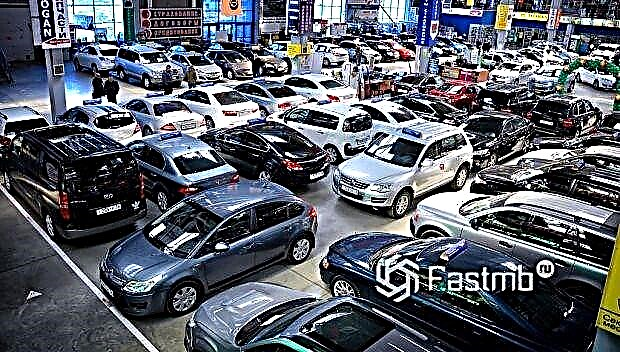
Under the conditions of national isolation, introduced in the spring in all regions of the country, car dealerships in Moscow, St. Petersburg and many other cities most affected by the virus, as well as most small regional dealers, have completely or partially suspended their activities. It resumes gradually, and the flow of clients, according to reports from local representatives of the AEB (Association of European Businesses), began to gain momentum in the second half of the year.
However, due to the rise in prices for primarily essential goods and services with a simultaneous fall in real incomes of the population, experts continue to predict a decrease in demand by about 20% at least until April 2021, as well as a sharp decline in exports to neighboring / far abroad countries.
Previously, about 40% of local auto products were sent abroad - even to Cuba, but the lion's share fell on the Czech Republic, Ukraine and Latvia. Most of all, according to the Autostat agency, the exported models of the brands Skoda, Lada and Renault.
The Ministry of Economy expects to subsidize the domestic auto industry until 2025, investing at least 65 billion rubles in the industry annually. Subsidies have been applied before (for example, in 2015 they amounted to 43 billion rubles, in 2016 - 50 billion, in 2017 - 65 billion), but now they will be focused not only on stimulating production and demand for domestic cars, but also for the development / promotion of new technologies.
In addition to conventional gas-petrol-diesel vehicles, the ministry wants to support the development of hybrid and electric vehicles, as well as partially and fully autonomous vehicles. This will help to stimulate buyers - both local and foreign.
But despite all the efforts, analysts' forecasts are disappointing: in the next few years, they say, the car market will return to normal slowly, and significant positive shifts in production, demand and export volumes are unlikely to be expected.
Conclusion
It is noteworthy that among the best-selling cars, the tone is set by locally produced products - they became bestsellers during the crisis. They also have to incur significant losses, but the Russians bought the most of these models this year (so far). Most motorists are interested in SUVs and crossovers: fewer of them were sold than a year ago, but other segments fell much deeper.
Interestingly, analysts have noticed an interesting trend in the domestic Russian car market. People here are still divided into different groups of buyers, but even those who previously bought only the cheapest cars for reasons of economy now feel the need to purchase something more expensive, not boring, technological and lifestyle-oriented.
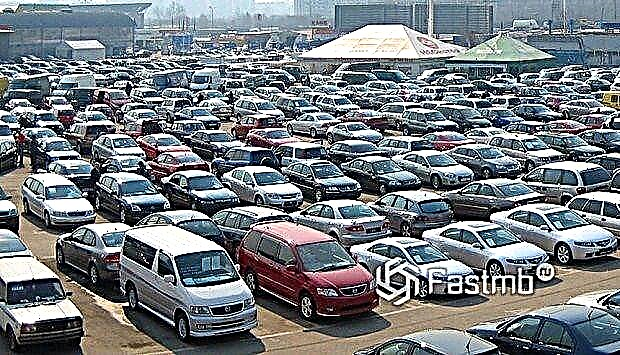
|| list |
- The situation in the Russian automotive market
- What cars are best selling in Russia, despite the crisis
- The most popular models for the summer of 2020
- Trends and forecasts



